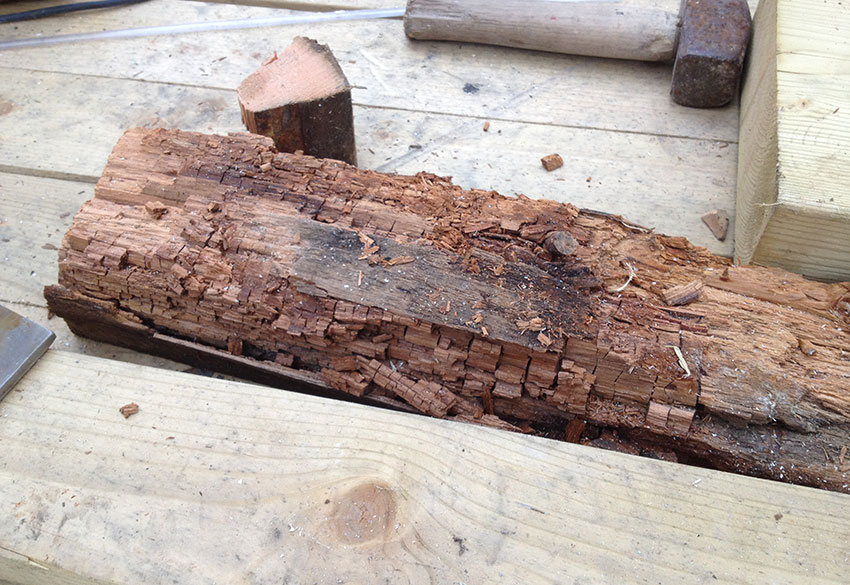WET
ROT
Wet rot is a fungus which attacks unprotected timbers in a property when they have become wet. If the environmental conditions are suitable for wet rot, the rot can develop and result in the breakdown of the structural integrity of the affected timbers. A water penetration issue or defective internal plumbing can provide the perfect conditions for timber decaying fungi to thrive.
There are numerous different species of wet rot though, which can prove problematic to the homeowner when trying to diagnose what type of rot problem is affecting their property.

Wet rot has a specific life cycle. At its inception, this type of rot will begin to develop strands which feed from the timber cells causing the timber to shrink and then will create a fruiting body which releases spores. The presence of wet rot within timber will cause the timber to begin to change colour. The timber will usually turn darker however it can turn considerably lighter but this is down to environmental factors. The timber will become spongy and soft to touch.
WET ROT SIGNS
- Paint finished on timber can stay intact as a veneer with the rot active in the heart of the timber
- Wood likely to feel spongy and weak, showing that the structure of the wood is affected.
- If the mycelium is apparent it tends to stay in the damp area with the fungal attack and not travel far from the source of moisture.
- Advanced decay will result in the wood shrinking and showing cracks mainly along the grain.
- Moisture content needs to be around 35 to 50% for wet rot to begin development.
